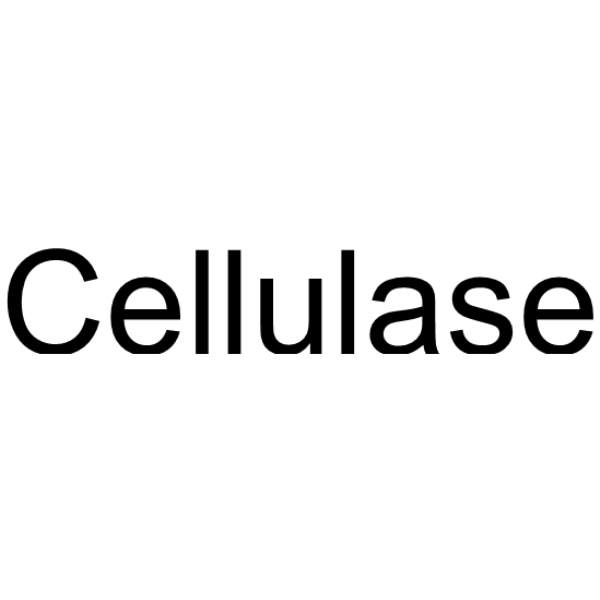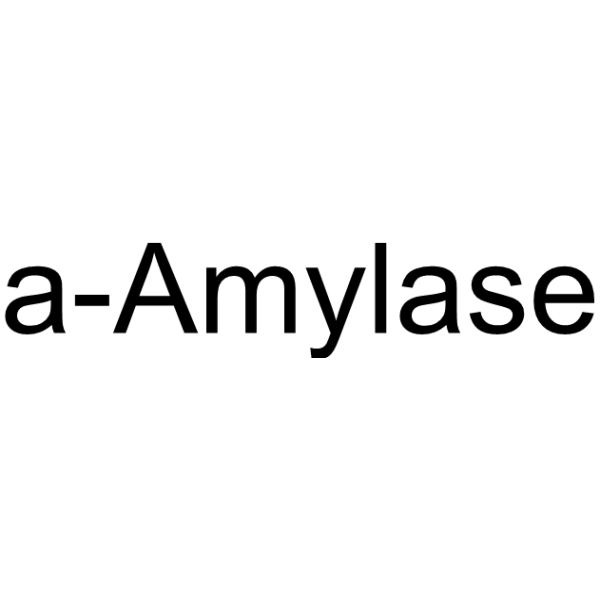Search Result
Results for "
linkage
" in MedChemExpress (MCE) Product Catalog:
20
Biochemical Assay Reagents
2
Isotope-Labeled Compounds
| Cat. No. |
Product Name |
Target |
Research Areas |
Chemical Structure |
-
- HY-N4254
-
|
DSPS
|
Liposome
|
Metabolic Disease
|
|
Distearoylphosphatidylserine (DSPS) acts as a monolayer. Phosphatidylserine is a phospholipid with a polar serine found in phosphoester linkage to diacylglycerol .
|
-

-
- HY-W016413
-
|
|
Others
|
Others
|
|
4-(Hydroxymethyl)phenoxyacetic acid is an acid-labile resin linkage agent for use in solid phase peptide synthesis .
|
-
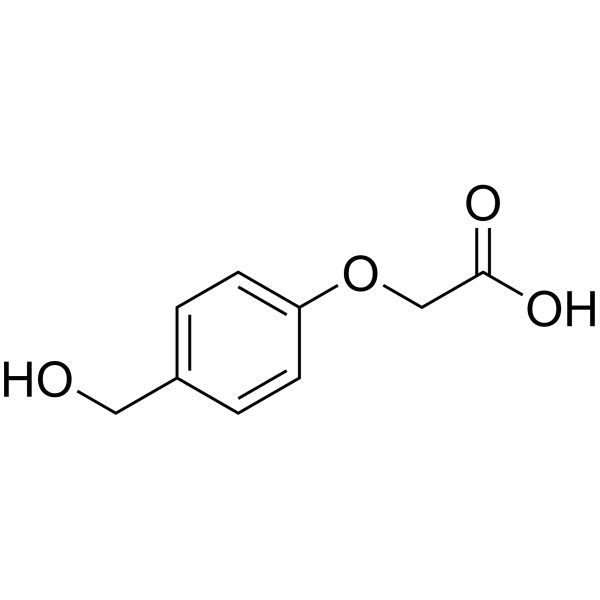
-
- HY-E70136
-
|
|
Others
|
Metabolic Disease
|
|
Endo-β-Galactosidase catalyzes the hydrolysis of internal β1-4 galactose linkages in unbranched, repeating poly-N-acetyllactosamine ([GlcNAc-?(1-3)Gal-?(1-4)]n) structures .
|
-
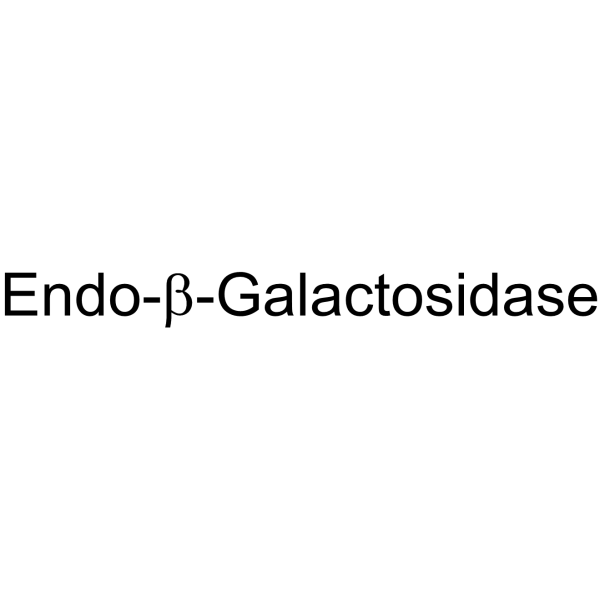
-
- HY-P2968
-
|
|
Amylases
|
Others
|
|
Bacterial α-Amylase catalyses the hydrolysis of internal α-1,4-glycosidic linkages in starch in low molecular weight products, such glucose, maltose and maltotriose units. Bacterial α-Amylase is often used in biochemical studies .
|
-
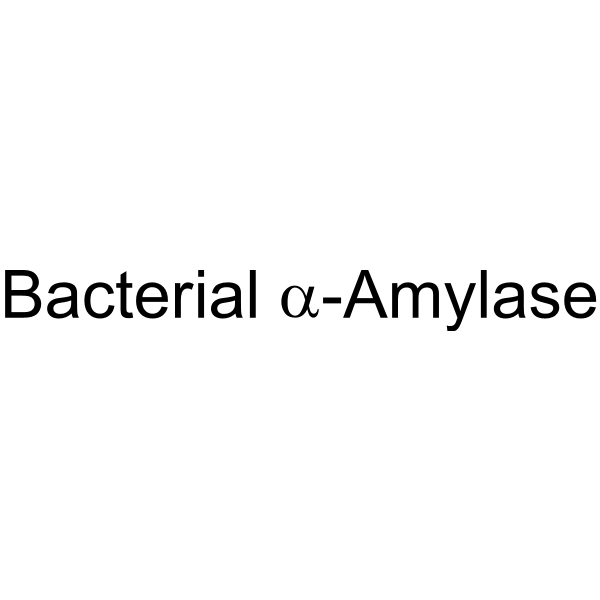
-
- HY-D2219
-
|
|
Fluorescent Dye
|
Others
|
|
Sulfo-Cy7 tetrazine is a near-infrared water-soluble fluorophore. Sulfo-Cy7 tetrazine contains the methyltetrazine group for rapid, efficient, and metal-free conjugation to cycloolefin in a reaction called TCO linkage .
|
-
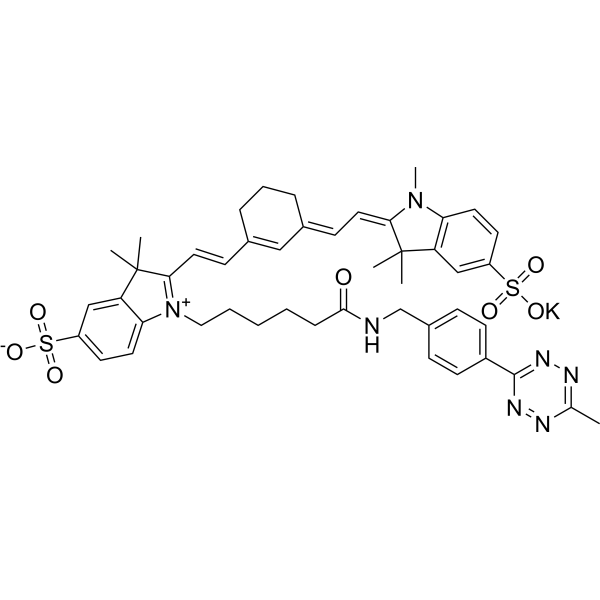
-
- HY-101160
-
|
DRG16
|
DNA Alkylator/Crosslinker
ADC Cytotoxin
|
Cancer
|
|
SG2057 (DRG16) is a PBD dimer containing a pentyldioxy linkage which binds sequence selectively in the minor groove of DNA forming DNA interstrand and intrastrand cross-linked adducts. SG2057 is a highly active antitumor agent .
|
-
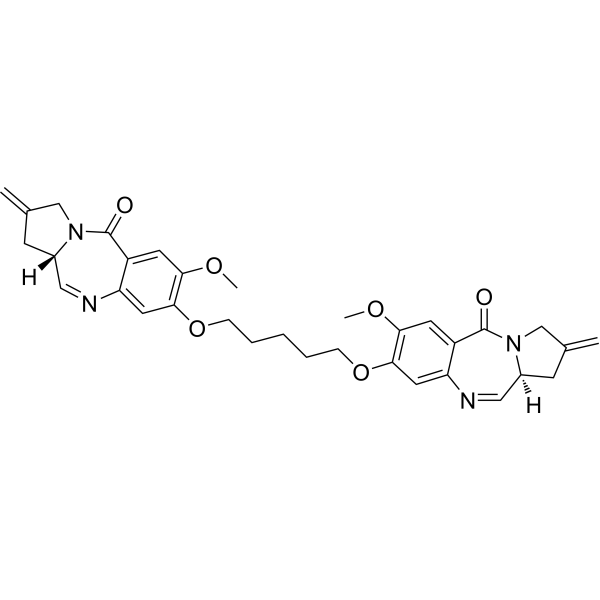
-
- HY-P2988
-
|
Exo-α-sialidase
|
Endogenous Metabolite
|
Infection
|
|
Neuraminidase, Microorganism (Exo-α-sialidase) is an exosialidase, is often used in biochemical studies. Neuraminidase cleaves α-ketosidic linkage between the sialic (N-acetylneuraminic) acid and an adjacent sugar residue. Neuraminidase, derived from mucosal pathogens, is a virulence factor that modifies the host's response to infection .
|
-
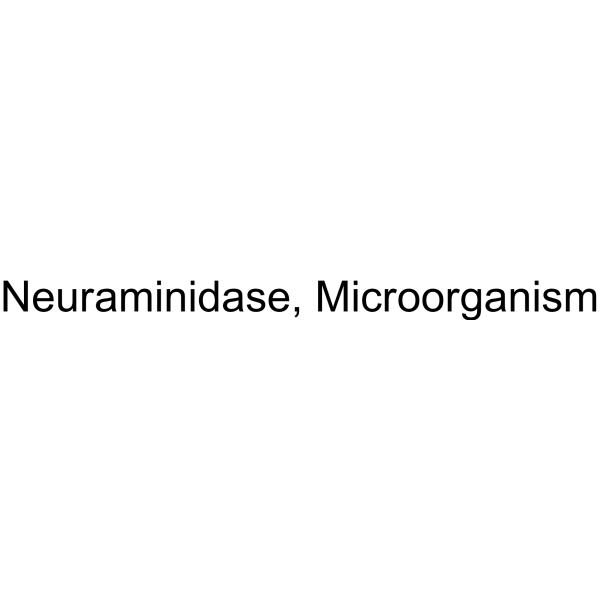
-
- HY-D1510
-
|
|
Biochemical Assay Reagents
|
Others
|
|
4-Nitrophenyl 2-O-(β-L-Fucopyranosyl)-β-D-Galactopyranoside is a synthetic chromogenic substrate and can be used in the assay of α-fucosidases which hydrolyze the glycosidic linkage Fuc α1-2Gal. The assay is based on the sequential action of α-fucosidase and an exogenously added exo-β-d-galactosidase to release the easily measurable p-nitrophenol moiety .
|
-
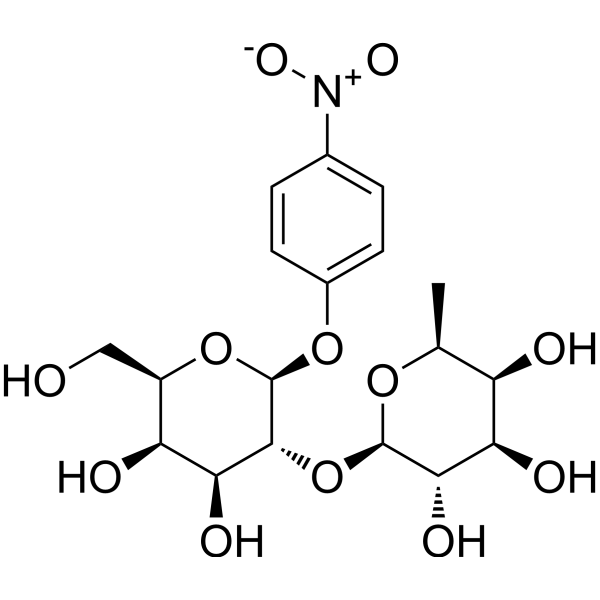
-
- HY-145823
-
|
|
EGFR
|
Cancer
|
|
EGFR-IN-42 (Compound 17b) is a potent inhibitor of EGFR with single-digit nanomolar activity. EGFR-IN-42 connects tamoxifen or endoxifen with the EGFR-inhibitor gefitinib via a covalent linkage. EGFR-IN-42 retains both ER antagonist activity and EGFR inhibition. EGFR-IN-42 has superior anti-cancer activity .
|
-

-
- HY-145824
-
|
|
EGFR
|
Cancer
|
|
EGFR-IN-43 (Compound 17c) is a potent inhibitor of EGFR with single-digit nanomolar activity. EGFR-IN-43 connects tamoxifen or endoxifen with the EGFR-inhibitor gefitinib via a covalent linkage. EGFR-IN-43 retains both ER antagonist activity and EGFR inhibition. EGFR-IN-43 has superior anti-cancer activity .
|
-

-
- HY-E70110
-
|
|
Others
|
Others
|
|
Endo-1,4-β-mannanase is an important catalytic agent that randomly cleave the β-1,4-linkage in the mannan backbone and release short β-1,4-mannooligosaccharides and mannose .
|
-

-
- HY-B0445
-
|
β-DPN; β-NAD; β-Nicotinamide Adenine Dinucleotide
|
Endogenous Metabolite
|
Metabolic Disease
|
|
NAD+ is a coenzyme composed of ribosylnicotinamide 5'-diphosphate coupled to adenosine 5'-phosphate by pyrophosphate linkage.
|
-
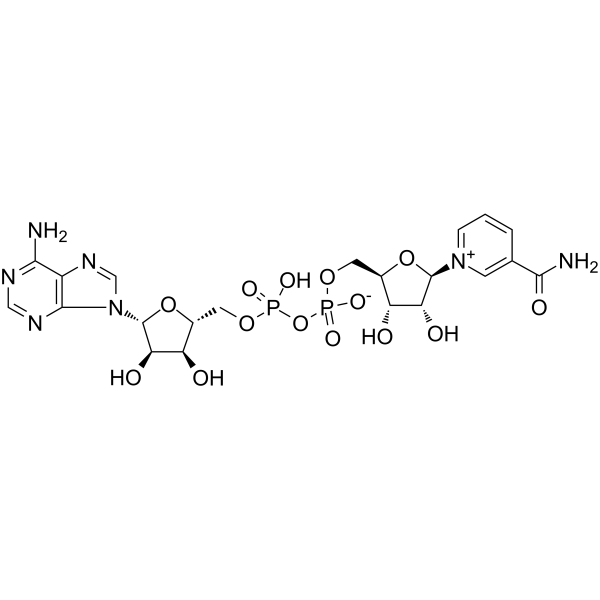
-
- HY-107824
-
-
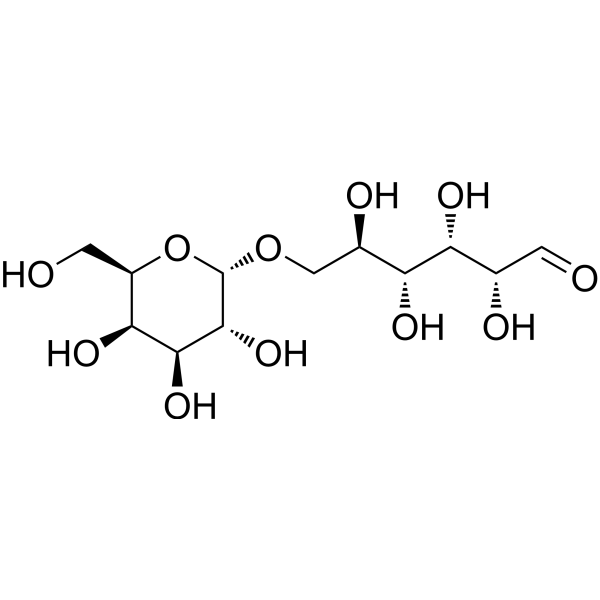
-
- HY-131166
-
|
|
Others
|
Others
|
|
Curdlan is a polysaccharide produced by bacteria and a homopolymer of glucose with β-1,3-glucosidic linkage .
|
-
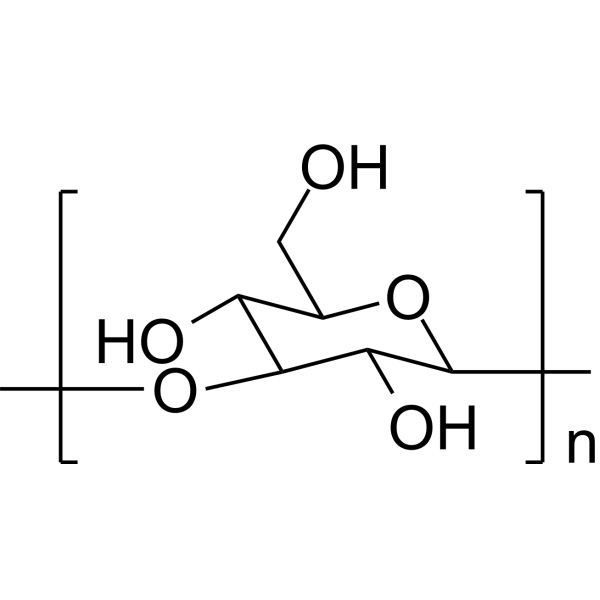
-
- HY-N10998
-
|
|
Others
|
Others
|
|
Chamaejasmenin A is a C-3/C-3’’ linkage biflavanone that can be isolated from Stellera chamaejasme L. .
|
-

-
- HY-108890
-
|
Glucosylceramidase; GCase
|
Endogenous Metabolite
|
Metabolic Disease
|
|
Glucocerebrosidase (Glucosylceramidase; GBA) is a lysosomal enzyme that catalyzes the cleavage of β-glucosidic linkage of glucocerebroside (GC) into glucose and ceramide .
|
-

-
- HY-135717
-
|
|
Others
|
Cancer
|
|
Norbiotinamine is an alternative to biotin. Norbiotinamine can be coupled with a carboxylic group of amino acids to give inverse peptides, having the amide linkage oriented in the opposite direction .
|
-
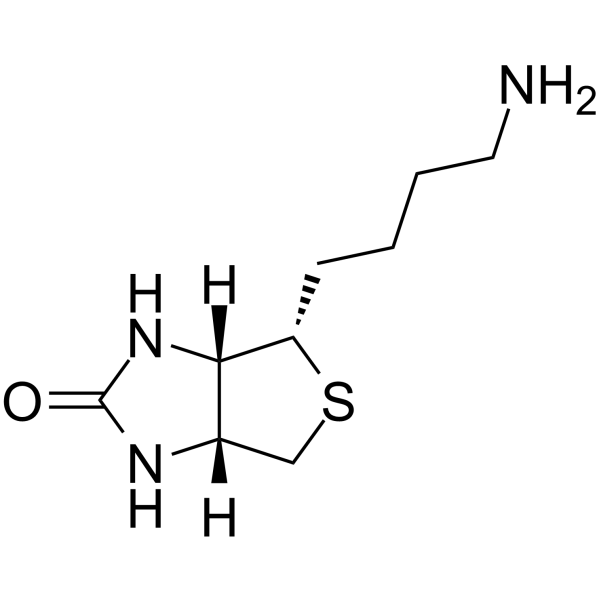
-
- HY-135717A
-
|
|
Others
|
Cancer
|
|
Norbiotinamine hydrochloride is an alternative to biotin. Norbiotinamine can be coupled with a carboxylic group of amino acids to give inverse peptides, having the amide linkage oriented in the opposite direction .
|
-

-
- HY-E70023
-
|
|
Endogenous Metabolite
|
Metabolic Disease
|
|
Sphingolipid ceramide N-deacylase (SCDase) cleaves the N-acyl linkage between fatty acids and sphingosine bases in various glycosphingolipids. Sphingolipid ceramide N-deacylase catalyzes glycosphingolipids to lysoglycosphingolipids .
|
-

-
- HY-W441002
-
|
|
Liposome
|
Others
|
|
DSPE-succinic acid is a phophalipid capped with a carboxylic acid moiety. The carboxylic acid moiety is reactive with amine to from a stable amide linkage. DSPE-succinic acid can be used to prepare nanoparticles or liposomes for agent nanocarrier to deliver therapeutics .
|
-
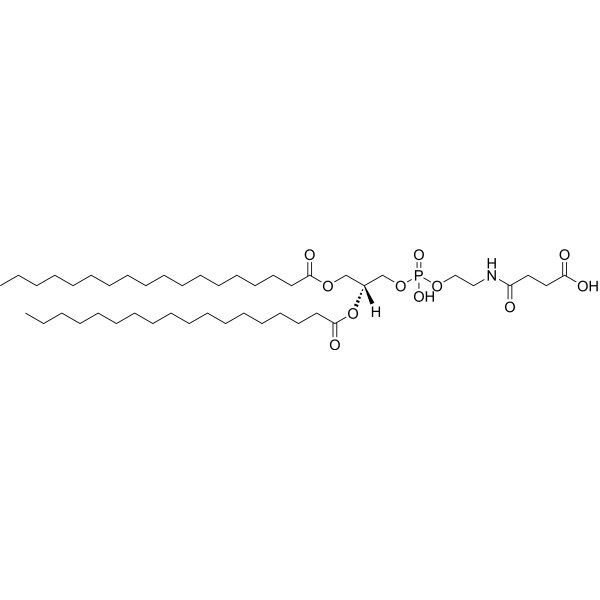
-
- HY-B0445S1
-
|
β-DPN-13C5; β-NAD-13C5; β-Nicotinamide Adenine Dinucleotide-13C5
|
Endogenous Metabolite
|
Metabolic Disease
|
|
NAD+- 13C5-1 is the 13C labeled NAD+[1]. NAD+ is a coenzyme composed of ribosylnicotinamide 5'-diphosphate coupled to adenosine 5'-phosphate by pyrophosphate linkage.
|
-

-
- HY-P2988B
-
|
|
Others
|
Infection
|
|
Neuraminidase, arthrobacter ureafaciens is an exosialidase which cleaves α-ketosidic linkage between the sialic (N-acetylneuraminic) acid and an adjacent sugar residue. Neuraminidase can facilitate virus release from infected cells .
|
-

-
- HY-W654288
-
|
β-DPN-d4; β-NAD-d4; β-Nicotinamide Adenine Dinucleotide-d4
|
Isotope-Labeled Compounds
|
Others
|
|
NAD+-d4 is the deuterium-labeled NAD+ (HY-B0445). NAD+-d4 is a coenzyme composed of ribosylnicotinamide 5'-diphosphate coupled to adenosine 5'-phosphate by pyrophosphate linkage.
|
-

-
- HY-E70038
-
|
|
Endogenous Metabolite
|
Metabolic Disease
|
|
Endoglycoceramidase II (EGCase II) is an endo-β-glucosidase releasing the complete glycan from ceramide in glycosphingolipids. Endoglycoceramidase II Catalyzes the hydrolysis of the β-glycosidic linkage between oligosaccharides and ceramides in various glycosphingolipids .
|
-
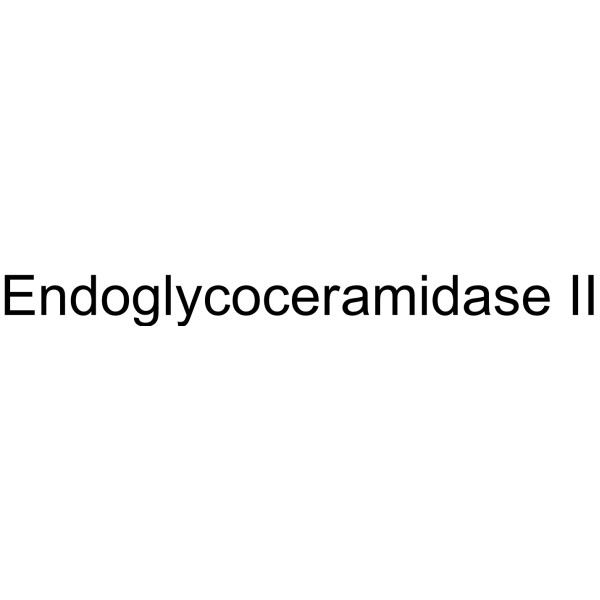
-
- HY-N7592
-
|
|
Others
|
Others
|
|
Arjunetin, isolated from Terminalia arjuna, is an insect feeding-deterrent and growth inhibitor .
|
-

-
- HY-P99493
-
|
IMGN242; huC242-DM4
|
Antibody-Drug Conjugates (ADCs)
Microtubule/Tubulin
|
Cancer
|
|
Cantuzumab ravtansine (IMGN242; huC242-DM4), an ADC, is a humanized monoclonal antibody, huC242, covalently linked via a disulfide bond to DM4 (DM4 (HY-12454)). Cantuzumab ravtansine has broad antitumor efficacy against a range of CanAg-positive human tumor xenografts .
|
-

-
- HY-E70116
-
|
Glycogen α-1,6-glucanohydrolase
|
Others
|
Others
|
|
Isoamylase (Glycogen α-1,6-glucanohydrolase) catalyzes the hydrolysis of α-1,6-glycosidic linkages in glycogen, amylopectin and α/β-limit dextrins .
|
-

-
- HY-E70281
-
|
rEGCase II
|
Biochemical Assay Reagents
|
Metabolic Disease
|
|
Recombinant endoglycoceramidase II (rEGCase II) is an endo-β-glucosidase releasing the complete glycan from ceramide in glycosphingolipids. Recombinant endoglycoceramidase II catalyzes the hydrolysis of the β-glycosidic linkage between oligosaccharides and ceramides in various glycosphingolipids .
|
-

-
- HY-W440896
-
|
|
Liposome
|
|
|
DSPE-PEG-SH, MW 2000 is a pegylated phospholipid with thiol group which is reactive with maleimide to form a covalent thioether linkage. The amphiphatic polymer can form lipid bilayer in aqueous solution and be used to encapsulate agents for drug delivery system, such as mRNA vaccine.
|
-
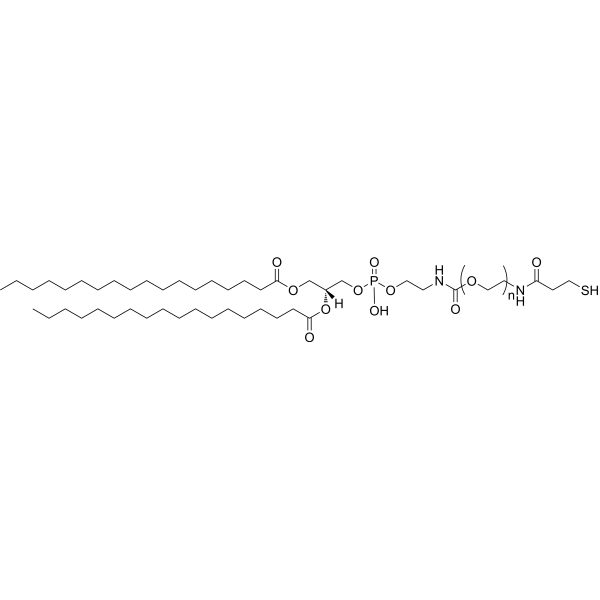
-
- HY-P3173
-
|
R-enzyme
|
Endogenous Metabolite
|
Others
|
|
Pullulanase (R-enzyme) is a starch debranching enzyme, is often used in biochemical studies. Pullulanase hydrolyses the α-1,6 glucosidic linkages in starch, amylopectin, pullulan, and related oligosaccharides. Pullulanase converts polysaccharide into small fermentative sugars during saccharification .
|
-

-
- HY-E70280
-
|
rEGCase I
|
Biochemical Assay Reagents
|
Metabolic Disease
|
|
Recombinant endoglycoceramidase I (rEGCase I) is a glycosidase that catalyzes the hydrolysis of the β-glycosidic linkage between oligosaccharides and ceramides. Recombinant endoglycoceramidase I catalyzes a transglycosylation reaction, which transfers the sugar moiety of glycosphingolipids (GSLs) to the primary hydroxyl group of several 1-alkanols .
|
-

-
- HY-120972
-
|
|
Others
|
Others
|
|
Pentafluorobenzenesulfonyl fluorescein is a H2O2-selective sensor that can be used to detect H2O2 levels in cells. Pentafluorobenzenesulfonyl fluorescein is normally non-fluorescent but fluoresces upon perhydrolysis of the sulfonyl linkage by H2O2 .
|
-

-
- HY-114351
-
|
|
Fluorescent Dye
|
Others
|
|
BODIPY FL Hydrazide is a green-fluorescent dye, BODIPY FL Hydrazide is reactive with aldehyde/ketone on polysaccharides and glycoproteins, yielding a reversible Schiff base product that can be transformed to a stable linkage using a reducing agent like sodium borohydride or sodium cyanoborohydride. (λex=495 nm, λem=516 nm) .
|
-
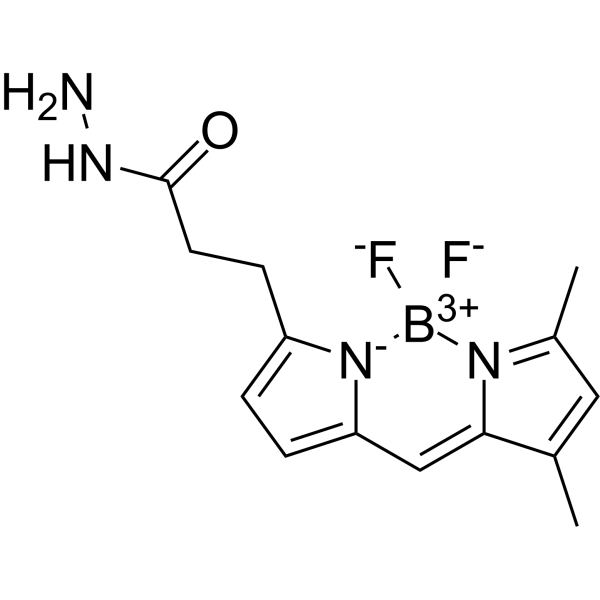
-
- HY-18759
-
|
|
p38 MAPK
TNF Receptor
|
Inflammation/Immunology
|
|
BMS-751324 is a p38α MAPK inhibitor. BMS-751324 equips a precursor of carbamyl-methyl linkage, containing esters and phosphate functional groups derived from hydroxyphenylacetic acid (HPA). BMS-751324 effectively inhibits foot swelling and LPS-induced TNFα production in an arthritic rat model .
|
-

-
- HY-162302
-
|
|
Others
|
Metabolic Disease
|
|
NMY1009 is a lipophilic C8-hydrocarbon chain conjugated analog that links mitochondrial uncouplers via ether linkages. NMY1009 can be released and enter the mitochondrial matrix and intermembrane space, thereby targeting mitochondrial uncoupler to adipose tissue and increasing energy expenditure in brown and white adipose tissue .
|
-

-
- HY-W441011
-
|
|
Liposome
|
Neurological Disease
Inflammation/Immunology
Cancer
|
|
DSPE-NHS is a bioconjugation phospholipid molecule with two hydrophobic lipid tails. The NHS-ester is reactive with N-terminal of protein/peptide or other amine molecule to form a stable amide linkage. DSPE-NHS is a self-assembling reagent which forms lipid bilayer in aqueous solution. DSPE-NHS can be used to prepare liposomes as agent nanocarrier .
|
-
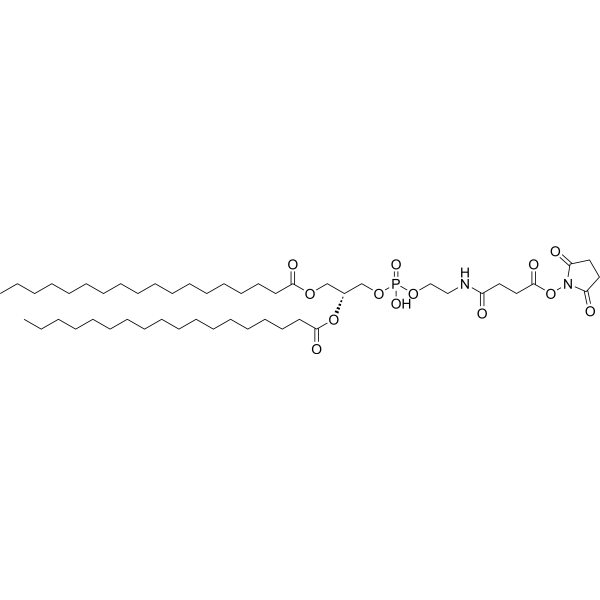
-
- HY-P5461
-
|
|
Bacterial
|
Others
|
|
CHRG01 is a biological active peptide. (CHRG01 is derived from human b-defensin 3 (hBD3) C-terminal amino acids 54 to 67, with all Cys residues substituted with Ser. This substitution removes all disulfide bond linkages within the sequence. CHRG01, like hBD3, displays electrostatic-dependent antimicrobial properties.)
|
-
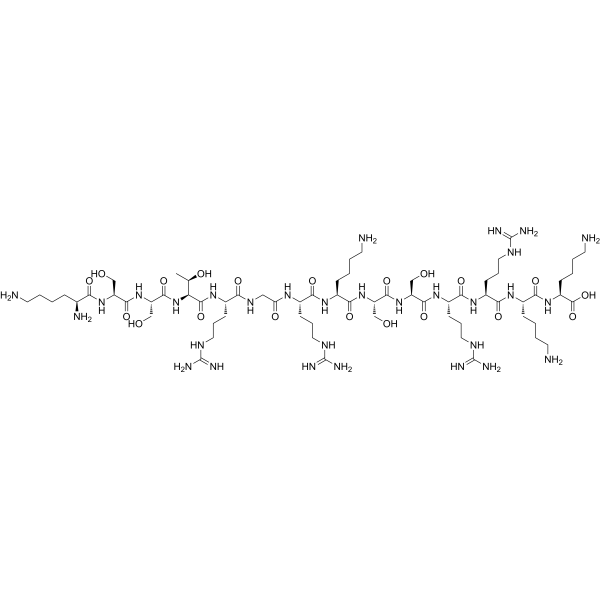
-
- HY-W077279
-
|
N4-Acetyl-2'-deoxy-5'-O-DMT-cytidine
|
DNA/RNA Synthesis
|
Others
|
|
5'-O-DMT-N4-Ac-dC (N4-Acetyl-2'-deoxy-5'-O-DMT-cytidine, compound 7), a deoxynucleoside, can be used to synthesize of dodecyl phosphoramidite which is the raw material for dod‐DNA (amphiphilic DNA containing an internal hydrophobic region consisting of dodecyl phosphotriester linkages) synthesis .
|
-

-
- HY-144323
-
|
|
PROTACs
PERK
|
Cancer
|
|
YF135 is an efficient and reversible-covalent KRAS G12C PROTAC. YF135 is designed and synthesized by tethering KRAS G12C inhibitor 48 (compound 6d) as the ligand, and basing on the scaffold of MRTX849 linkage VHL ligand. YF135 significantly induces the degradation of KRAS G12C in a reversible manner and decreases phospho-ERK level through the E3 ligase VHL mediated proteasome pathway .
|
-

-
- HY-W010706
-
|
5'-O-DMT-N4-Bz-dC
|
Nucleoside Antimetabolite/Analog
|
Others
|
|
N4-Benzoyl-5'-O-(4,4'-dimethoxytrityl)-2'-deoxycytidine (5'-O-DMT-N4-Bz-dC) can be used for synthesis oligodeoxynucleotides containing a 3'-S-phosphorothiolate (3'-PS) linkage. N4-Benzoyl-5'-O-(4,4'-dimethoxytrityl)-2'-deoxycytidine is an useful tool for probing enzyme-catalyzed cleavage processes in DNA .
|
-
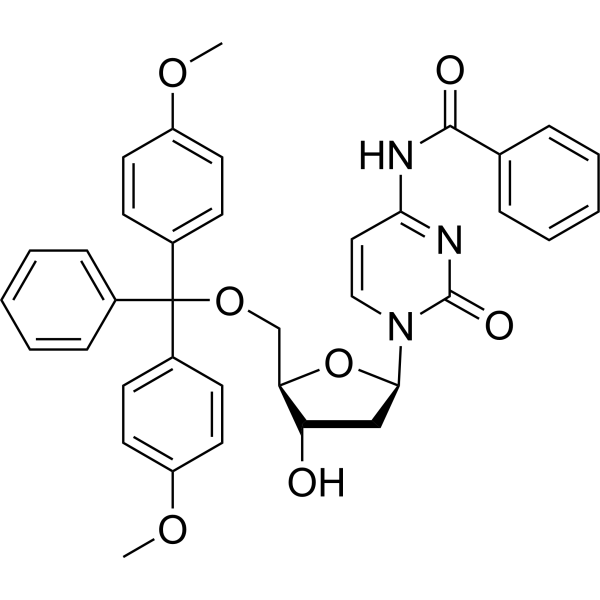
-
- HY-151647
-
|
|
Biochemical Assay Reagents
|
Others
|
|
3-Azidopropanoic acid-PFP ester is an azidopropanoic acid linker that contains an activated PFP ester. The azide group can undergo copper-catalyzed Click Chemistry reactions with alkynes, DBCO and BCN to form triazole linkages. The activated PFP ester can react with amine groups to form stable amide bonds . 3-Azidopropanoic acid-PFP ester is a click chemistry reagent, it contains an Azide group and can undergo copper-catalyzed azide-alkyne cycloaddition reaction (CuAAc) with molecules containing Alkyne groups. Strain-promoted alkyne-azide cycloaddition (SPAAC) can also occur with molecules containing DBCO or BCN groups.
|
-
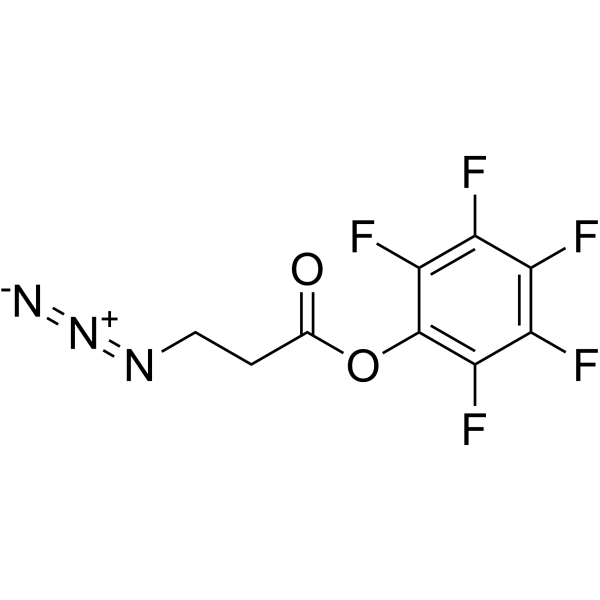
-
- HY-E70052
-
|
GGTA1
|
Endogenous Metabolite
|
Metabolic Disease
|
|
alpha-1,3-Galactosyltransferase (a1,3GalT) (GGTA1) catalyzes the generation of the α-gal glycan via the transfer of a galactose (Gal) in α1-3 linkage, from a uridyl-diphosphate (UDP) donor onto the N-acetyllactosamine (Galβ1,4GlcNAc-R) of glycoproteins. alpha-1,3-Galactosyltransferase (a1,3GalT) is responsible for the synthesis of the α-galactose (α-Gal) epitope found in most mammalian species .
|
-

-
- HY-145736A
-
|
|
Drug-Linker Conjugates for ADC
Apoptosis
|
Cancer
|
|
β-Glucuronide-dPBD-PEG5-NH2 TFA is the β-glucuronide-linked pyrrolobenzodiazepine dimer, which binds to the prenylated antibody for synthesis of antibody-drug conjugate (ADC) cIRCR201-dPBD.β-glucuronide-linkage as a cleavable linker. β-Glucuronide-dPBD-PEG5-NH2 TFA, as a proagent of cIRCR201-dPBD, reduces side effects. β-Glucuronide-dPBD-PEG5-NH2 TFA can induce apoptosis and arrest cell cycle. β-Glucuronide-dPBD-PEG5-NH2 TFA has antitumor activity .
|
-
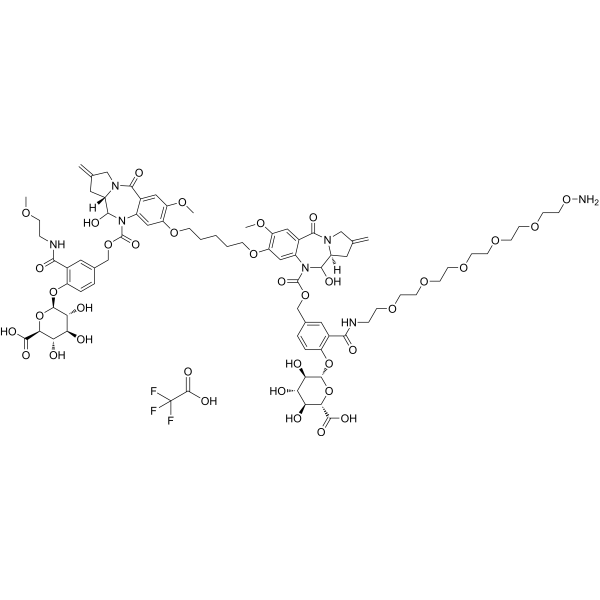
-
- HY-145736
-
|
|
Drug-Linker Conjugates for ADC
Apoptosis
|
Cancer
|
|
β-Glucuronide-dPBD-PEG5-NH2 is the β-glucuronide-linked pyrrolobenzodiazepine dimer, which binds to the prenylated antibody for synthesis of antibody-drug conjugate (ADC) cIRCR201-dPBD. β-glucuronide-linkage as a cleavable linker. β-Glucuronide-dPBD-PEG5-NH2, as a proagent of cIRCR201-dPBD, reduces side effects. β-Glucuronide-dPBD-PEG5-NH2 can induce apoptosis and arrest cell cycle. β-Glucuronide-dPBD-PEG5-NH2 has antitumor activity .
|
-
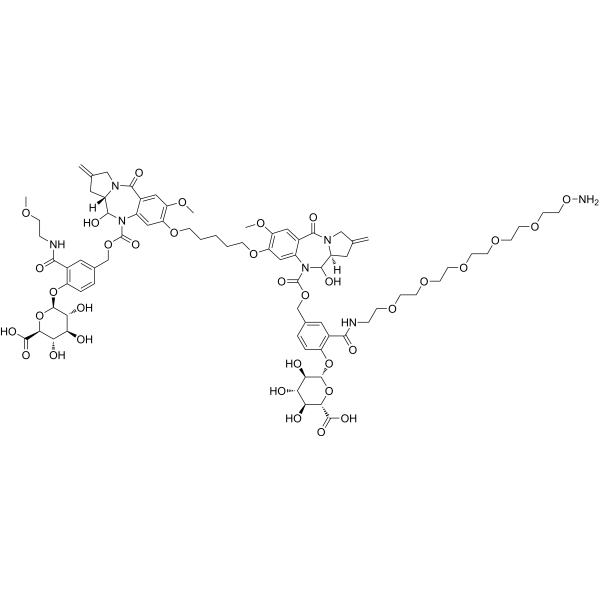
| Cat. No. |
Product Name |
Type |
-
- HY-114351
-
|
|
Fluorescent Dyes/Probes
|
|
BODIPY FL Hydrazide is a green-fluorescent dye, BODIPY FL Hydrazide is reactive with aldehyde/ketone on polysaccharides and glycoproteins, yielding a reversible Schiff base product that can be transformed to a stable linkage using a reducing agent like sodium borohydride or sodium cyanoborohydride. (λex=495 nm, λem=516 nm) .
|
-
- HY-D2219
-
|
|
Fluorescent Dyes/Probes
|
|
Sulfo-Cy7 tetrazine is a near-infrared water-soluble fluorophore. Sulfo-Cy7 tetrazine contains the methyltetrazine group for rapid, efficient, and metal-free conjugation to cycloolefin in a reaction called TCO linkage .
|
| Cat. No. |
Product Name |
Type |
-
- HY-N4254
-
|
DSPS
|
Drug Delivery
|
|
Distearoylphosphatidylserine (DSPS) acts as a monolayer. Phosphatidylserine is a phospholipid with a polar serine found in phosphoester linkage to diacylglycerol .
|
-
- HY-B2220
-
|
|
Biochemical Assay Reagents
|
|
Cellulase is an enzyme catalyzing the hydrolysis of certain linkages in cellulose and other carbohydrates.
|
-
- HY-B2193
-
|
|
Biochemical Assay Reagents
|
|
α-Amylase is a hydrolase enzyme that catalyses the hydrolysis of internal α-1, 4-glycosidic linkages in starch to yield products like glucose and maltose.
|
-
- HY-P2968
-
|
|
Biochemical Assay Reagents
|
|
Bacterial α-Amylase catalyses the hydrolysis of internal α-1,4-glycosidic linkages in starch in low molecular weight products, such glucose, maltose and maltotriose units. Bacterial α-Amylase is often used in biochemical studies .
|
-
- HY-E70011
-
|
|
Biochemical Assay Reagents
|
|
Levanase is a slime-dissolving enzyme of Rhodotorula species. Levanase performs random hydrolysis of β-2,6 fructofuranosyl linkages in β-2,6 fructans containing more than 3 fructose units .
|
-
- HY-E70023
-
|
|
Biochemical Assay Reagents
|
|
Sphingolipid ceramide N-deacylase (SCDase) cleaves the N-acyl linkage between fatty acids and sphingosine bases in various glycosphingolipids. Sphingolipid ceramide N-deacylase catalyzes glycosphingolipids to lysoglycosphingolipids .
|
-
- HY-E70153
-
|
EC:2.4.1.69; FUT2
|
Enzyme Substrates
|
|
Fucosyltransferase 2 (EC:2.4.1.69; FUT2) adds a fucose to the terminal galactose of a type I chain in an α1-2 linkage .
|
-
- HY-W441002
-
|
|
Drug Delivery
|
|
DSPE-succinic acid is a phophalipid capped with a carboxylic acid moiety. The carboxylic acid moiety is reactive with amine to from a stable amide linkage. DSPE-succinic acid can be used to prepare nanoparticles or liposomes for agent nanocarrier to deliver therapeutics .
|
-
- HY-E70191
-
|
EC:2.4.1.22; B4GALT2
|
Enzyme Substrates
|
|
β-1,4-Galactosyltransferase 2 catal exclusive specificity for the donor substrate UDP-galactose and all transfer galactosein a beta1,4 linkage .
|
-
- HY-E70038
-
|
|
Biochemical Assay Reagents
|
|
Endoglycoceramidase II (EGCase II) is an endo-β-glucosidase releasing the complete glycan from ceramide in glycosphingolipids. Endoglycoceramidase II Catalyzes the hydrolysis of the β-glycosidic linkage between oligosaccharides and ceramides in various glycosphingolipids .
|
-
- HY-W440896
-
|
|
Drug Delivery
|
|
DSPE-PEG-SH, MW 2000 is a pegylated phospholipid with thiol group which is reactive with maleimide to form a covalent thioether linkage. The amphiphatic polymer can form lipid bilayer in aqueous solution and be used to encapsulate agents for drug delivery system, such as mRNA vaccine.
|
-
- HY-E70138
-
|
EC:2.4.1.133; B4GALT7
|
Enzyme Substrates
|
|
β-1,4-Galactosyltransferase 7 has exclusive specificity for the donor substrate UDP-galactose and all transfer galactose in a β-1,4 linkage to similar acceptor sugars: GlcNAc, Glc, and Xyl. .
|
-
- HY-E70185
-
|
EC:3.2.1.24; MAN2B1; LAMAN
|
Enzyme Substrates
|
|
Lysosomal α-mannosidase (EC:3.2.1.24; MAN2B1; LAMAN) is an exoglycosidase that hydrolyzes α-mannosidic linkages of mannoglycans. Lysosomal α-mannosidase can be used in the study of α-mannosidosis .
|
-
- HY-P3173
-
|
R-enzyme
|
Biochemical Assay Reagents
|
|
Pullulanase (R-enzyme) is a starch debranching enzyme, is often used in biochemical studies. Pullulanase hydrolyses the α-1,6 glucosidic linkages in starch, amylopectin, pullulan, and related oligosaccharides. Pullulanase converts polysaccharide into small fermentative sugars during saccharification .
|
-
- HY-W441011
-
|
|
Drug Delivery
|
|
DSPE-NHS is a bioconjugation phospholipid molecule with two hydrophobic lipid tails. The NHS-ester is reactive with N-terminal of protein/peptide or other amine molecule to form a stable amide linkage. DSPE-NHS is a self-assembling reagent which forms lipid bilayer in aqueous solution. DSPE-NHS can be used to prepare liposomes as agent nanocarrier .
|
-
- HY-E70039
-
|
|
Biochemical Assay Reagents
|
|
alpha-2-3,6,8-Sialidosidase (SpNanA) catalyses hydrolysis of alpha-(2->3)-, alpha-(2->6)-, alpha-(2->8)- glycosidic linkages of terminal sialic acid residues in oligosaccharides, glycoproteins, glycolipids, colominic acid and synthetic substrates .
|
-
- HY-E70156
-
|
EC:2.4.1.-; FUT7
|
Enzyme Substrates
|
|
Fucosyltransferase 7 (FUT7) is a golgi stack membrane protein. Fucosyltransferase 7catalyzes the final fucosylation step in the synthesis of Lewis antigens and generates a unique glycosylated product sialyl Lewis X (sLeX). Fucosyltransferase 7 catalyzes alpha-1,3 glycosidic linkages involved in the expression of sialyl Lewis X antigens .
|
-
- HY-W077279
-
|
N4-Acetyl-2'-deoxy-5'-O-DMT-cytidine
|
Gene Sequencing and Synthesis
|
|
5'-O-DMT-N4-Ac-dC (N4-Acetyl-2'-deoxy-5'-O-DMT-cytidine, compound 7), a deoxynucleoside, can be used to synthesize of dodecyl phosphoramidite which is the raw material for dod‐DNA (amphiphilic DNA containing an internal hydrophobic region consisting of dodecyl phosphotriester linkages) synthesis .
|
-
- HY-E70150
-
|
EC:2.4.3.3; Alpha-N-Acetylgalactosaminide alpha-2,6-sialyltransferase 1
|
Enzyme Substrates
|
|
ST6 Sialyltransferase 1 (EC:2.4.3.3, ST6GALNAC1, SIAT7A, Alpha-N-acetylgalactosaminide alpha-2,6-sialyltransferase 1)? transfers a sialic acid, N-acetylneuraminic acid (NeuAc), in an alpha-2,6 linkage to O-linked GalNAc residues. ST6 Sialyltransferase 1 plays an important role in cancer .
|
-
- HY-E70052
-
|
GGTA1
|
Biochemical Assay Reagents
|
|
alpha-1,3-Galactosyltransferase (a1,3GalT) (GGTA1) catalyzes the generation of the α-gal glycan via the transfer of a galactose (Gal) in α1-3 linkage, from a uridyl-diphosphate (UDP) donor onto the N-acetyllactosamine (Galβ1,4GlcNAc-R) of glycoproteins. alpha-1,3-Galactosyltransferase (a1,3GalT) is responsible for the synthesis of the α-galactose (α-Gal) epitope found in most mammalian species .
|
| Cat. No. |
Product Name |
Target |
Research Area |
-
- HY-P3752
-
|
|
Peptides
|
Others
|
|
Gly-Ala-Tyr is a tripeptide composed of L-glycine, alanine and L-tyrosine joined in sequence by peptide linkages. Ala-Gly-Tyr is functionally related to L-alanine, glycine and L-tyrosine.
|
-
- HY-P4383
-
|
|
Peptides
|
Others
|
|
H-Leu-Leu-Ala-OH is a tripeptide composed of two L-leucine units joined to L-alanine by a peptide linkage. H-Leu-Leu-Ala-OH shows antioxidant activities .
|
-
- HY-P3173
-
|
R-enzyme
|
Endogenous Metabolite
|
Others
|
|
Pullulanase (R-enzyme) is a starch debranching enzyme, is often used in biochemical studies. Pullulanase hydrolyses the α-1,6 glucosidic linkages in starch, amylopectin, pullulan, and related oligosaccharides. Pullulanase converts polysaccharide into small fermentative sugars during saccharification .
|
-
- HY-P5461
-
|
|
Bacterial
|
Others
|
|
CHRG01 is a biological active peptide. (CHRG01 is derived from human b-defensin 3 (hBD3) C-terminal amino acids 54 to 67, with all Cys residues substituted with Ser. This substitution removes all disulfide bond linkages within the sequence. CHRG01, like hBD3, displays electrostatic-dependent antimicrobial properties.)
|
-
- HY-K0226
-
|
|
|
MCE CHO Magnetic Beads (200 nm, 10 mg/mL) contain CHO functional groups, which react with primary amines on proteins or other molecules to form stable amide linkages,can covalently immobilize proteins for the affinity purification of antibodies, antigens and other biomolecules.
|
-
- HY-K0227
-
|
|
|
MCE NHS Magnetic Beads (200 nm, 10 mg/mL) contain N-hydroxysuccinimide (NHS) functional groups, which react with primary amines on proteins or
other molecules to form stable amide linkages,can covalently immobilize proteins for the affinity purification of antibodies, antigens and other
biomolecules.
|
| Cat. No. |
Product Name |
Target |
Research Area |
-
- HY-P99493
-
|
IMGN242; huC242-DM4
|
Antibody-Drug Conjugates (ADCs)
Microtubule/Tubulin
|
Cancer
|
|
Cantuzumab ravtansine (IMGN242; huC242-DM4), an ADC, is a humanized monoclonal antibody, huC242, covalently linked via a disulfide bond to DM4 (DM4 (HY-12454)). Cantuzumab ravtansine has broad antitumor efficacy against a range of CanAg-positive human tumor xenografts .
|
| Cat. No. |
Product Name |
Category |
Target |
Chemical Structure |
| Cat. No. |
Product Name |
Chemical Structure |
-
- HY-B0445S1
-
|
|
|
NAD+- 13C5-1 is the 13C labeled NAD+[1]. NAD+ is a coenzyme composed of ribosylnicotinamide 5'-diphosphate coupled to adenosine 5'-phosphate by pyrophosphate linkage.
|
-

-
- HY-W654288
-
|
|
|
NAD+-d4 is the deuterium-labeled NAD+ (HY-B0445). NAD+-d4 is a coenzyme composed of ribosylnicotinamide 5'-diphosphate coupled to adenosine 5'-phosphate by pyrophosphate linkage.
|
-

| Cat. No. |
Product Name |
|
Classification |
-
- HY-D2219
-
|
|
|
Tetrazine
|
|
Sulfo-Cy7 tetrazine is a near-infrared water-soluble fluorophore. Sulfo-Cy7 tetrazine contains the methyltetrazine group for rapid, efficient, and metal-free conjugation to cycloolefin in a reaction called TCO linkage .
|
-
- HY-158000
-
|
|
|
Alkynes
|
|
Bile acid probe 1, a clickable and photoreactive probe for Bile acid, contains ester linkage .
|
-
- HY-151647
-
|
|
|
Azide
|
|
3-Azidopropanoic acid-PFP ester is an azidopropanoic acid linker that contains an activated PFP ester. The azide group can undergo copper-catalyzed Click Chemistry reactions with alkynes, DBCO and BCN to form triazole linkages. The activated PFP ester can react with amine groups to form stable amide bonds . 3-Azidopropanoic acid-PFP ester is a click chemistry reagent, it contains an Azide group and can undergo copper-catalyzed azide-alkyne cycloaddition reaction (CuAAc) with molecules containing Alkyne groups. Strain-promoted alkyne-azide cycloaddition (SPAAC) can also occur with molecules containing DBCO or BCN groups.
|
Your information is safe with us. * Required Fields.
Inquiry Information
- Product Name:
- Cat. No.:
- Quantity:
- MCE Japan Authorized Agent:


















































